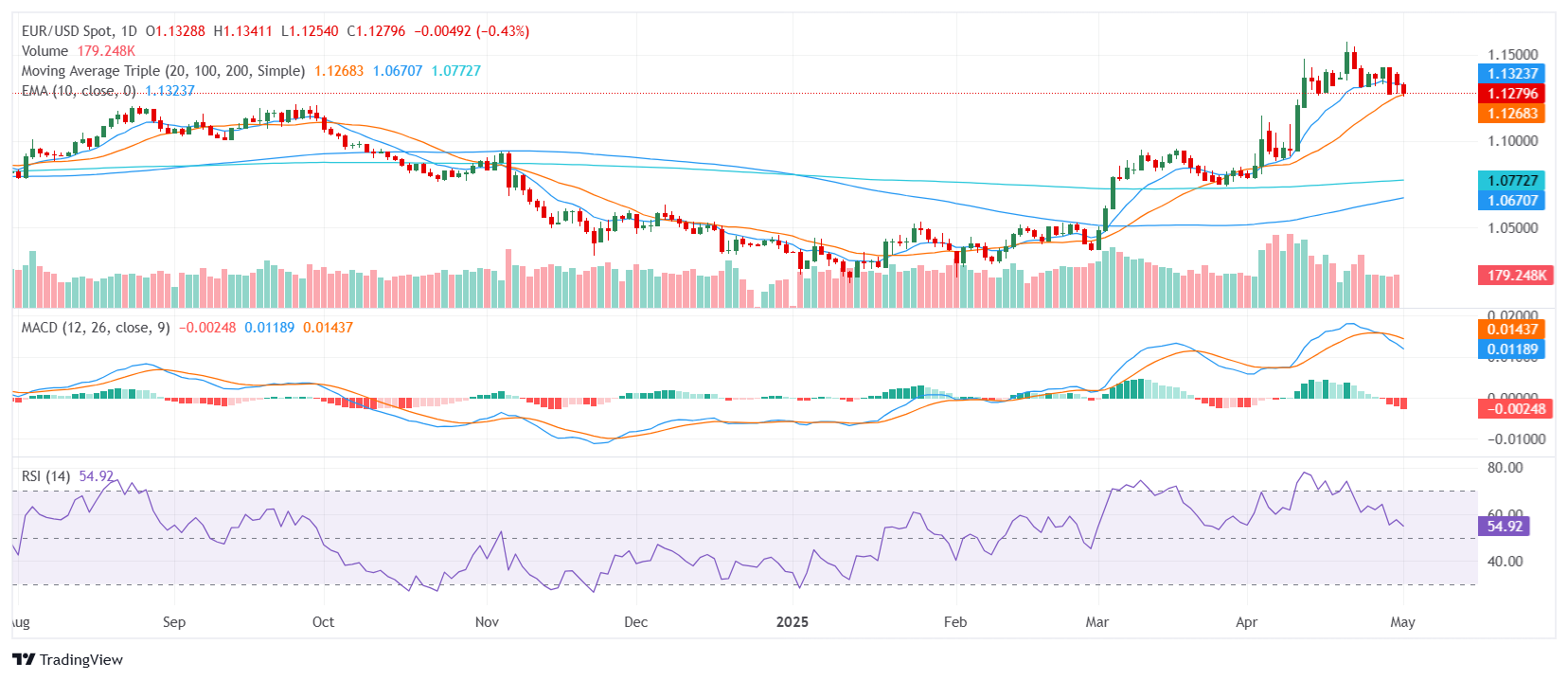EUR/USD Price Analysis: Euro holds losses near 1.1300
- EUR/USD trades near the 1.1300 area after giving back early gains post-European session.
- Bullish trend remains intact, though intraday signals show conflicting momentum.
- Long-term averages support the upside, while resistance emerges just above the current range.
The EUR/USD pair is holding a bearish tone on Thursday, after retreating modestly following the European session. Price action is contained within a mid-range zone around the 1.1300 mark, reflecting a brief pause in upward momentum. Although short-term indicators show mixed signals — with the MACD turning negative and the RSI hovering in neutral territory — the overall structure is supported by strong trend-based indicators, keeping buyers in control of the broader narrative.
Technically, the EUR/USD continues to show a bullish structure. The Relative Strength Index remains neutral near 55, indicating there’s still room for either direction. Meanwhile, the Moving Average Convergence Divergence has flipped to a sell signal, hinting at short-term fatigue. Both the Awesome Oscillator and the Stochastic RSI Fast are neutral, reinforcing the idea that momentum has stalled for now.
The backbone of the bullish case lies in the moving averages. The 20-day, 100-day, and 200-day Simple Moving Averages — all below the current price — are pointing higher, offering strong support for continued upside. The 30-day EMA and SMA also back the trend, providing dynamic support just beneath the current trading zone.
Key support levels are located at 1.1275, 1.1258, and 1.1224. Resistance stands at 1.1334, 1.1337, and 1.1379.
Daily chart

